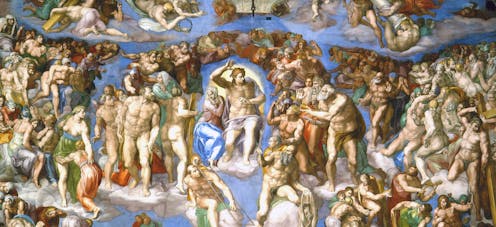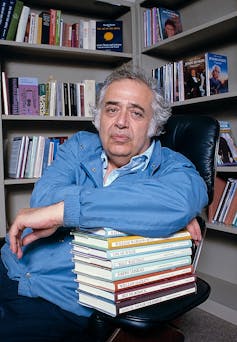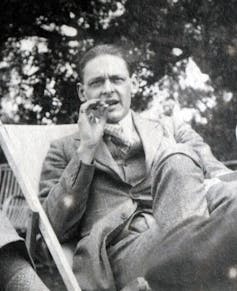
Joshua Cohen’s ribald campus novel The Netanyahus (2021), winner of the Pulitzer Prize, is set during the winter of 1959-60. It depicts Ben-Zion Netanyahu, father of the current Israeli Prime Minister, during an itinerant phase of his academic career.
Netanyahu applies for a position in the history department at the fictional Corbin University (read Cornell). Because Netanyahu is Jewish and writes on the fate of Iberian Jews in the late middle ages, the complacently prejudiced WASP who presides over the history department (and whose correspondence is scented with spilled lime juice intended for his gimlets) entreats Ruben Blum, the only Jewish member of the faculty, to join the hiring committee.
Ruben, whose passage from the Yiddish-speaking enclaves of the Bronx to gentile-dominated academia represents the triumph of one version of assimilation, acquaints himself with Ben-Zion’s blood-soaked history of the Inquisition in ecstatic all-night reading sessions that bring him face to face with that which assimilation represses: an implacable, transhistorical antisemitism from which Zionism is the only escape.

Cohen’s novel purports to be “an account of a minor and ultimately even negligible episode in the history of a very famous family”. But it is also, if obliquely, a meditation on the life of its dedicatee, Harold Bloom (1930-2019). Cohen’s novel attests to the fact that Bloom continues to loom large over American literature nearly four years after his death.
Bloom’s public reputation rests to a large extent on his interventions during the so-called “canon wars” of the 1980s and 1990s, and the series of big, public-facing works he produced around this time, including The Western Canon (1994) and Shakespeare: The Invention of the Human (1998).
But among literary scholars and critics, his name is indelibly linked with his monograph The Anxiety of Influence (1973), which celebrates its half-centenary this year.
Bloom was fond of quoting Heidegger’s maxim:
The thinker needs one thought only […] the difficulty is to hold fast to this one only thought as the one and only thing that he must think.
The “anxiety of influence” is Bloom’s one thought. It was developed and ramified throughout the better part of his vast corpus, but elaborated most forcefully and concisely in the short monograph that bears its name.
It is a deceptively simple idea, and like many famous interventions in the history of thought, it renders a common-sense maxim rich and strange by pushing it into a zone of extremity.
Belatedness
The anxiety of influence is a name for the sense that any artist or writer must sooner or later experience (assuming their medium has an established tradition) that everything worth doing has been done before. This is the condition that Bloom calls “belatedness”.

His radical claim is that belatedness, and the anxiety it entails, is the central problem of all creative effort. It is therefore a paradigm from which (seemingly) every important feature of a “strong” poem can be derived.
The controversies in which Bloom would later become embroiled already stand forth in this formulation. His theory of strong poetry might just as well be a theory of literature tout court. In this, he resists the 20th-century phenomenon by which the novel usurped poetry as the central, paradigmatic literary form. The many kinds of popular texts that would subsequently enter the syllabi of many university English departments were anathemas.
“Strong” might be described as the book’s central adjective:
My concern is only with strong poets, major figures with the persistence to wrestle with their strong precursors, even to the death. Weaker talents idealize; figures of capable imagination appropriate for themselves. But nothing is got for nothing, and self-appropriation involves the immense anxieties of indebtedness, for what strong maker desires the realization that he has failed to create himself?
Let’s pause over the sentence “Weaker talents idealize; figures of capable imagination appropriate for themselves”, because it is a microcosm of Bloom’s whole theory. For Bloom has his own anxiety of influence, in the sense that his central thought was also addressed by T.S. Eliot, the preeminent poet-critic of the 20th century. In his most influential essay, Tradition and the Individual Talent, Eliot declares:
Immature poets imitate; mature poets steal; bad poets deface what they take, and good poets make it into something better, or at least something different.
Bloom swerves away from Eliot, in part by inserting a phrase borrowed from Wallace Stevens – namely, “figures of capable imagination”, which is taken from Stevens’ poem Mrs. Alfred Uruguay. Encoded in this brief allusion is an entire polemic for which Bloom is also remembered in literary circles – namely, his heroic effort to promote Wallace Stevens to a higher rank in the canon of 20th-century American poetry than Eliot and Ezra Pound.
If nothing else, it gives us a taste of the dense allusiveness that comprises the warp and weft of Bloom’s prose.
The agon of Bloom

The difference between Eliot’s position and Bloom’s might be interpreted as a case of the narcissism of small differences, but this would be to ignore the crux of Bloom’s agon (the ancient Greek term for a struggle) with Eliot.
Bloom venerated the English Romantic poets; Eliot sought to banish them. As Alistair Heys remarks in Anatomy of Bloom (2014), Eliot’s theory seems to Bloom to be a kind of Platonic idealism, whereas Bloom saw influence as a vigorous clash between poets and their precursors that remakes the tradition in violent and unpredictable ways.
This agonistic dimension is crucial to Bloom’s thought, and one of the fundamental ways in which it is indebted to psychoanalysis. It also sets Bloom apart from another important precursor, more proximate but less famous: the critic Walter Jackson Bate and his book The Burden of the Past and the English Poet (1970).
Bate’s book belongs to a venerable tradition of empirical literary scholarship. Unlike Bloom, Bate adopts an air of unruffled curiosity at the phenomenon he describes. His determination to historicise the burden of the past marks another difference. He is happy to acknowledge influence as a problem (nearly) as old as literature itself, but he regards it as having intensified within English poetry from about the time of the Restoration.
For Bloom, however, the intensity of the dilemma is a function of the strength of the poets involved in the struggle for originality, and the strength of their precursors. The empirical exercise of source-hunting can be applied indifferently to any writer, but the analysis of influence in the Bloomian sense will tend to yield better results in the case of “strong” poets – and strong poets are those in whose work the battle with their mighty precursors is most marked.
There is an undeniable risk of circularity here. The Bloomian procedure only operates upon a canon that only the Bloomian procedure can be counted on to identify.
Odd one out
The transhistorical dimension of Bloom’s thought is a reminder of the ambitions of literary theory in the early 1970s. When he published The Anxiety of Influence, the humanities were in the throes of the “linguistic turn” and inspired by the latest developments in French philosophy. Literary studies began to imagine itself as affording a general theory of representation, and thus queen of the disciplines.
Bloom was swept up into the so-called “Yale School”, crystallised for a broad public by the volume Deconstruction and Criticism (1979), which featured essays by Bloom, Paul de Man, Jacques Derrida, Geoffrey Hartman and J. Hillis Miller.
Derrida – the originator of the close-reading technique known as “deconstruction” – was a practising philosopher, not a literary critic, associated with the École Normale Supérieure, not the Yale faculty. Yet it is Bloom who seems, from our contemporary vantage point, the odd one out. This all the more surprising for the fact he was a driving force behind the volume.
The reason is that Bloom would later distance himself vociferously from the project of theory in general. He came to treat it an all-purpose bogeyman, obliterating distinctions between, for instance, Derrida’s deconstruction and the then-nascent but subsequently much more influential New Historicism, inspired by Derrida’s contemporary and sometime rival Michel Foucault.
Bloom’s basic point of difference with both of these theories was that they undermined the autonomy of literary language. New Historicism treated literary language as an expression of underlying social forces, while deconstruction viewed it as an unstable field of deferred meanings, shot through with traces of all those genres that “literature” excludes to constitute itself.
Bloom stridently resisted the idea that literature can be regarded as merely one form of expression among others and he maintained, in particular, that criticism had no wider emancipatory value.
Read more: Explainer: the ideas of Foucault
Misreading
Bloom’s work has entered our common stock of concepts reduced to a couple of memorable ideas. The first is “the anxiety of influence” itself; the second is misreading.
Bloom argues that writing involves the unconscious, necessary and creative misreading (Bloom sometimes favours the term “misprision”) by later writers (whom Bloom refers to as “ephebes”) of their precursors.
The Anxiety of Influence identifies six forms of misreading, which Bloom calls “revisionary ratios”. Taken together, these revisionary ratios represent not just a toolkit for literary interpretation, but a speculative account of poetic development.
The first is Clinamen, or misprision in its simple form. This involves the ephebe following the precursor up to a point, then swerving away.
The second is Tessera, in which the ephebe retains the terms of the precursor poem, but uses them in a different sense.
Kenosis describes a poem of humbling and self-emptying, but with an antithetical twist. By catching the precursor in their own act of self-humbling, the successor poet makes a bid for their own autonomy.
In Daemonisation, or the counter-sublime, the ephebe aligns with the daemon or source of inspiration in the precursor poem – that is to say, with forces in the precursor that exceed the ephebe’s grasp.
Askesis, or self-purgation, is the attainment of a state of solitude, in which the ephebe surrenders the part of themself that is most marked by the precursor’s influence.
Finally, in Apophrades, or the return of the dead, the precursor returns to interrupt the ephebe’s solitude. But this time the roles are reversed. The ephebe comes to seem as if they could be the author of the precursor’s most characteristic work.
Kabbalistic inspiration
For all their breadth and ambition, Bloom’s revisionary ratios have not meaningfully entered the conceptual vocabulary of literary studies, even as their governing concept, “the anxiety of influence”, assuredly has. His theoretical innovations of the 1970s have been overshadowed by Bloom the contrarian culture warrior.
But Cohen’s recent novel points us towards a different legacy, reminding us of the Kabbalistic inspiration behind Bloom’s criticism, which became increasingly prominent after the publication of The Anxiety of Influence.
There is a deep strain of pathos in the tricksy, metafictional coda to The Netanyahus, where Cohen reveals Bloom as the source of the anecdote that supplies the novel with its plot. Bloom’s stories, Cohen recalls, “poured forth in that high-pitched nasal voice of his – a Bronx boy’s dream of a donnish Brit’s accent”. These stories encompassed:
His childhood on the Grand Concourse and first reading the poetry of Moyshe-Leib Halpern and Jacob Glatstein: the fish would come from the market wrapped in newspapers (the Forverts, the Morgen Freiheit), and he’d unwrap it and sometimes the ink would have run and lines of poems would be imprinted on the side of the fish and he’d try to read them; he’d try to read the fish and guess the author, from backwards Yiddish impressed onto wet iridescent scales. He told me about first reading the New Testament in Yiddish.
Is this not Bloom’s own kenosis? Behind the severe, harassing master who extemporises subtle urgent proof that the theory of poetry is the theory of life was the bibliomaniacal Yiddish-speaking boy growing up in the Bronx. For Bloom, the Western Canon, and above all Romantic poetry, were his entrée into an otherwise inhospitable world. He was himself a testament (sometimes despite himself) to America’s multicultural warp and weft.
Benjamin Madden does not work for, consult, own shares in or receive funding from any company or organisation that would benefit from this article, and has disclosed no relevant affiliations beyond their academic appointment.
This article was originally published on The Conversation. Read the original article.







